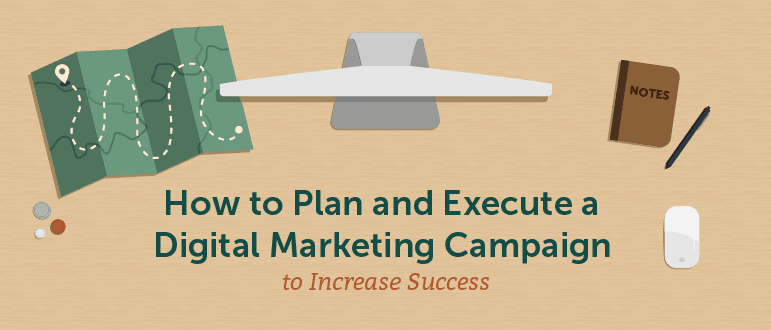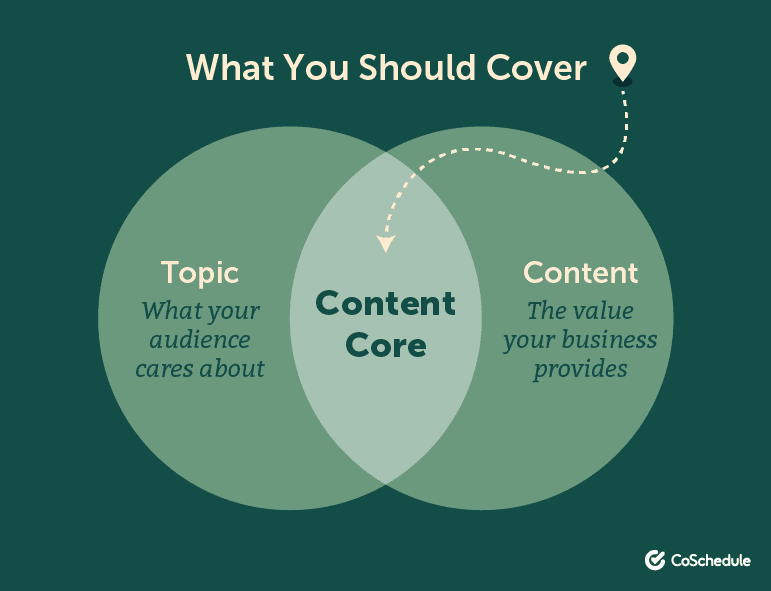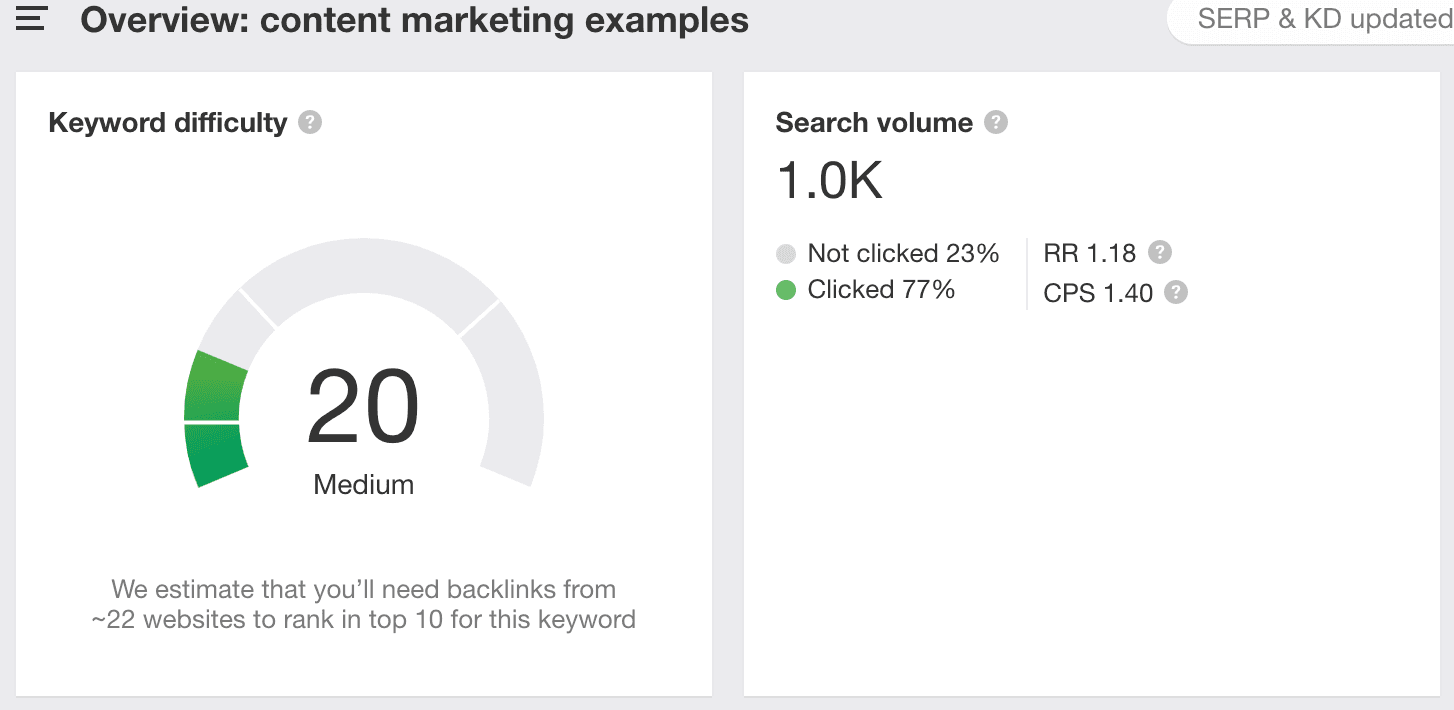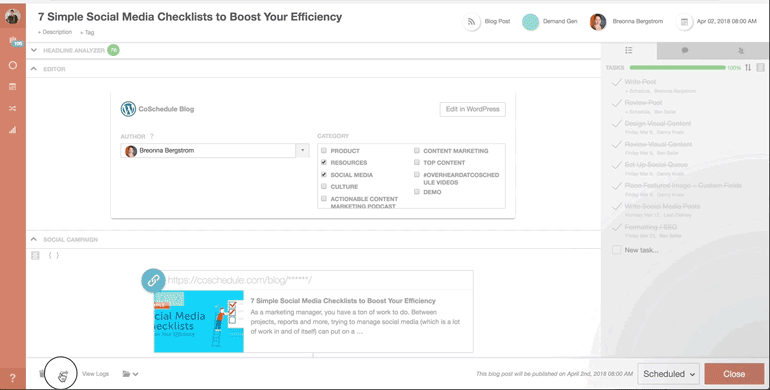
Most marketers think their digital marketing success rides and dies on
flashy tactics and amazing
creative. After all, awards aren’t given to the “Most Organized Marketing Plan” or the “Type A Marketing Manager of the Year”.
Many great
digital marketing campaigns are creative, original, and groundbreaking… all the sexy adjectives that drive award ceremonies.
This can be a problem.
Sure your campaign creative was dope… but at what cost?
When marketers spend too much time focused on pushing creative boundaries, the front-end planning that makes the campaign successful, can get lost in the shuffle. This results in last-minute fire drills, missed deadlines, and shattered budgets.
That said, however, taking the time to properly plan and execute your online marketing campaign prior to launch are two of the most important factors for success.
Planning + Execution: The Hidden Drivers to Success
I get it. This topic isn’t as compelling as, say, 100 examples of award-winning marketing campaigns…
(*Adds topic to
editorial calendar*)
… But, if you really want to drive better marketing results, focus on honing your planning and execution skills.
There’s even data to back up this claim.
Our annual
State of Marketing Strategy Survey of over 3,000marketers found…

[Tweet “The most organized marketers are 397% more likely to report success. #marketingstats”]
- Top marketers are organized. The most organized marketers are 397% more likely to report success.
- Top marketers set goals. Goal-setting marketers are 376% more likely to report success.
- Top marketers document their strategy. Marketers with a documented strategy are 313% more likely to report success.
- Top marketers proactively plan projects and campaigns. Marketers who proactively plan projects are 356% more likely to report success.
Now, I’m not saying that you should ditch all your uber-creative ideas or stop hiring great creative folks for your team. However, if you want to ensure a successful marketing campaign, make sure you’ve got all your ducks in a row before the creative work kicks off.
That’s exactly what this post will help you with.
Because even the most organized marketing managers find themselves struggling to properly plan and execute complicated campaigns with cross-functional teams and tons of moving parts.
Before we dive into the meat of this post, check out these templates to help you plan and execute your next
digital marketing campaign.
[Tweet “Free Templates to help you plan and execute your digital marketing campaigns.”]
You’ll find:
- A keyword tracking spreadsheet to help drive better results for your blogging activities.
- A project management calendar and checklist template to help plan deadlines and track project progress.
- A marketing plan outline template to document your entire marketing plan using this free outline.
- A marketing budget template to make sure you stay on budget.
3 Keys to Planning a Successful Digital Marketing Campaign
The first things on your list to launch a successful marketing campaign revolve around laying a good foundation. Here are a few must-do planning activities to start your project on the right foot.
Key #1: Set Clear Goals
Goals give you, your team members, and stakeholders a clear way of knowing if your marketing project was worthwhile.
You wouldn’t board a plane knowing it was going to fly around aimlessly without a destination. Same goes for your digital marketing campaign. In order to know when you’ve arrived, you need a clear goal, otherwise, your team will flub their way through the project haphazardly.
Here’s how to easily set goals for your next marketing project.
Set SMART Marketing Goals for Your Campaign
S.M.A.R.T. stands for specific, measurable, aspirational, realistic, and time-bound:
- Specific: Your goal must focus on one clearly defined metric.
- Measurable: You must have a way to measure the content you publish against that metric.
- Achievable: Your goal must push you, but shouldn’t be too far from reality that you are demotivated by it.
- Relevant: Your goals should be relevant and contributing to the business’ wider objectives.
- Time-bound: Your goal must have an end date upon which you will achieve that metric.

If you want your marketing activities to move the business forward, your marketing goals need to be tied back to the business’ wider objectives.
Let’s say your company’s business objective is to drive more revenue and be consistently profitable. In order to achieve this, your marketing team probably needs to generate more leads per week.
Thus, your marketing goal should be to generate a specific number of leads per week. Each individual marketing campaign should also have a goal set to work against that. Say you’re launching a new whitepaper, the goal of that whitepaper should be to produce 100 (or whatever number is aspirational, yet realistic) leads during the first month.
Here are some common examples of marketing goals:
- Increase website traffic.
- Gain more social media followers.
- Grow an email list.
- Improve conversion rates.
- Get more website or social media engagement.
- Drive more click-throughs on paid ads.
Key #2: Set Your Budget
Your campaign budget will dictate what projects you can pursue and how in-depth you can go on each one. But how do you go about actually setting a budget? Here’s a breakdown…
Start by understanding how much it costs your team to create an average piece of content and divide it by the results it produces.

Determine how many hours it takes to complete each project and calculate the hourly rate of your team members.
Here’s an example of the cost of creating one blog post.
- 4 hours writing content at $25 per hour
- 1 hour designing graphics at $20 per hour
- 1 hour editing and proofreading at $25 per hour
- 1 hour promoting content on social media at $15 per hour
- 30 minutes promoting content via email at $20 per hour
The total cost of creating one blog post is about $170
Now, let’s say the total budget for your digital marketing campaign is $20,000 and you initially want to do PPC ads, influencer partnerships, a few email journeys, 5 blog posts, and
social media advertising.
Repeat the process above for each element. This will give you an overall budget for your entire digital marketing campaign.
Key #3: Map Out Your Marketing Campaign Workflow
Your digital marketing campaign should have a bulk of activity happen over a week or two, then consistently drip activities over an extended period of time. This ensures that you get the best return on investment for all your hard work.
To map out all the projects your campaign will include, use a spreadsheet, Google calendar or project management tool like CoSchedule. Here’s how it works in CoSchedule.
Start by creating a new Marketing Campaign by clicking on a date in your CoSchedule calendar.

Then choose the top option entitled “Marketing Campaign”.

This will create a custom calendar for your digital marketing campaign. Add a title for the campaign, start and end dates, and a color label on the next screen. Then click the button in the bottom right hand corner that says “Create Marketing Campaign”.

From here, you can add each individual project to your campaign calendar so everyone knows what projects are going live and when.

The next thing on your list is to map out all the tasks necessary for completing each project. Start by listing the following information:
- The tasks required to complete the project.
- Who is responsible for getting it done.
- How long each step should take.
For example, here’s what this might look like for a blog post:
- Write Outline: Writer - Due 17 Days Before Publish
- Finish Draft: Writer - Due 14 Days Before Publish
- Edit Draft: Manager/Editor - Due 12 Days Before Publish
- Create Graphics: Designer - 10 Days Before Publish
- Schedule Social Promotion: Writer/Social Strategist - 8 Days Before Publish
- Schedule Post to Publish: Editor - 7 Days Before Publish
You’ll want to find some way to delegate and track each of these tasks as your team progresses forward with the project. Here’s how you can do it with CoSchedule.
Click into one of the projects that you created on your marketing campaign calendar. Then, add each step to your checklist.

Next, assign deadlines for each task.

And delegate it to the relevant person.

Each person will then see their tasks assigned to them on their CoSchedule calendars.

How to Successfully Execute a Digital Marketing Campaign
After you’ve planned your campaign budget, mapped out all your projects, and delegated tasks, you can move on to how you will execute your campaign.
Here are some tips for executing your marketing campaigns better.
Focus on Your Content Core
Here’s a situation that rings true for a lot of marketing teams, you’re constantly pumping out content, but sales and revenue are flat. You’re not seeing your content drive leads like you need it to.
You might have one of two problems (or maybe both).
The Traffic Trap:
This trap is when your marketing team is creating content your audience cares about but fails to convert traffic into customers. Your content is getting great traffic — but revenue doesn’t increase proportionally.
The Promotional Trap:
This trap is when your marketing content is too promotional that fails to connect with your audience’s needs, pains, and interests.
Your content core is the intersection where your customer’s needs cross with your business offering.

Do Your (SEO) Research
In order to execute your blogging activities better, you’ll want to make sure that the topics you are covering aren’t too difficult for you to rank on.
A lot of new customers will find your business through search engines. If your content doesn’t rank, it won’t be found by those who need your product.
In addition to your content core, do some research and find keywords that…
- Fit in your content core AND…
- Are low difficulty and high volume
Ahrefs is a great tool for this. Here’s how to use it to plan out all of your content.
To start, create a running list of all keyword topics that your audience cares about. Here is an example from CoSchedule.

Then go through and weed out all the items that are not within your content core.
Next, input each keyword into Ahrefs and find the ones that have your best chance of ranking and producing results (i.e. high volume and low difficulty).
Here’s what Ahrefs give us for the keywords “marketing plan examples”.

Verses the keywords “content marketing examples”.

Build Your Email List
Social media platforms change the rules on us all the time. We, as marketers, are beholden to whatever they want. They say jump… we say how high.
As they change algorithms, it directly affects our reach, engagement, and ROI and we have little or no recourse… except spending more of our advertising dollars. ?
This is why your email list is so important. Nobody dictates who on your list will see your emails – and you don’t have to shell out tons of money to get people to see your messages.
When you send an email, each active user is going to get delivered that message. This is why the ROI on
email marketing is so astonishing and why you should focus a lot of your execution efforts building your email list.
According to
Campaign Monitor, email marketing has an average ROI of 4400% or $44 for every $1 spent.

How do you do this? Make sure that tactics to build your email list are included in all of your marketing campaign projects.
Here are a couple of easy ways:
- Include a downloadable content item that adds value to every blog post.
- If creating Ebooks, whitepapers or ultimate guides, gate them.
- Require an email before signing up for webinars.
- Create pre-orders for new product launches.
- Create a digital tool or quiz.
- Run a contest.
- Use website pop-ups.
Track and Monitor Campaign Progress
Executing a successful digital marketing campaign is hard work… especially when it comes to monitoring its progression.
Many marketing teams are divided across different office locations and have a range of different specialties. This makes collaboration and tracking campaign progress difficult for even the most skilled marketing project managers.
The average marketing team is plagued by the dreaded status meeting. Here are some statistics about meeting that will make your stomach turn.
- About 35% of a marketing manager’s time is spent in meetings.
- People spend an average of 4 hours/week prepping for status meetings.
- More than $37 billion is wasted every year on unproductive meetings.

Luckily, there are a few simple ways to make your meetings more manageable.
There’s
even a way to end the status meeting altogether. More on that later.

Implement a Daily Stand-up Meeting
“Wait…Not another meeting,” you’re thinking.
Hear me out on this one. Daily stand-ups are a key part of the
Agile Project Management methodology and an easy way to wrangle your out-of-control status meetings.
The daily stand-up meeting isn’t your average meeting. They’re short, effective, and essential for better collaboration.
Stand-up meetings are 15-minute syncs that happen every morning like clockwork (usually right when people get to work). Each member of the team discusses three points:
- What they did yesterday: what they worked on and accomplished.
- What they will do today: what are their top tasks for the day?
- What potential roadblocks might prevent success?

By implementing daily stand-ups, team members can keep each other in the loop on what’s happening, without lengthy, ad hoc status meetings.
Other benefits include:
- Keeping teams on the same page.
- Facilitating proactive communication.
- Discussing problems before they wreak havoc on a project’s timeline.
- Are an unobtrusive part of your day.
Use a Marketing Project Management Platform
Remember when I mentioned that there’s a way to end status meetings altogether?
Marketing Project Management Platforms like CoSchedule can help make this a reality.
Here’s how:
For starters, CoSchedule has a feature called the Team Management Dashboard that is basically a daily stand-up without the meeting.

You can see the individual tasks everyone on your team is working on and easily reshuffle based on bottlenecks, sickness, or shifting priorities as needed.

But what about your updating your boss and other project stakeholders? Well, CoSchedule has you covered there, too.
With Read Only views, you can create custom views of your calendar that are interactive, update in real-time, AND give project stakeholders the updates they need without all the meetings.
All you have to do is click the icon and a custom link is created that you can share with anyone. As you make changes and updates to your marketing campaign, the link will automatically be updated, too.

Don’t want them to have access any longer? Simply break the link and the shared view will be unavailable.

Set Yourself up for Marketing Campaign Success with This Process
Although not the most interesting elements of digital marketing, focusing on the front-end processes, planning and execution will surely set your team up for creative success…
And who doesn’t want to be at least 300% more successful with the marketing campaigns?
If you’re keen to learn more about how CoSchedule can help get you organized, hop on a demo call below.

 Most marketers think their digital marketing success rides and dies on flashy tactics and amazing creative. After all, awards aren’t given to the “Most Organized Marketing Plan” or the “Type A Marketing Manager of the Year”.
Many great digital marketing campaigns are creative, original, and groundbreaking… all the sexy adjectives that drive award ceremonies.
This can be a problem.
Sure your campaign creative was dope… but at what cost?
When marketers spend too much time focused on pushing creative boundaries, the front-end planning that makes the campaign successful, can get lost in the shuffle. This results in last-minute fire drills, missed deadlines, and shattered budgets.
That said, however, taking the time to properly plan and execute your online marketing campaign prior to launch are two of the most important factors for success.
Most marketers think their digital marketing success rides and dies on flashy tactics and amazing creative. After all, awards aren’t given to the “Most Organized Marketing Plan” or the “Type A Marketing Manager of the Year”.
Many great digital marketing campaigns are creative, original, and groundbreaking… all the sexy adjectives that drive award ceremonies.
This can be a problem.
Sure your campaign creative was dope… but at what cost?
When marketers spend too much time focused on pushing creative boundaries, the front-end planning that makes the campaign successful, can get lost in the shuffle. This results in last-minute fire drills, missed deadlines, and shattered budgets.
That said, however, taking the time to properly plan and execute your online marketing campaign prior to launch are two of the most important factors for success.
 [Tweet “The most organized marketers are 397% more likely to report success. #marketingstats”]
[Tweet “The most organized marketers are 397% more likely to report success. #marketingstats”]
 If you want your marketing activities to move the business forward, your marketing goals need to be tied back to the business’ wider objectives.
Let’s say your company’s business objective is to drive more revenue and be consistently profitable. In order to achieve this, your marketing team probably needs to generate more leads per week.
Thus, your marketing goal should be to generate a specific number of leads per week. Each individual marketing campaign should also have a goal set to work against that. Say you’re launching a new whitepaper, the goal of that whitepaper should be to produce 100 (or whatever number is aspirational, yet realistic) leads during the first month.
Here are some common examples of marketing goals:
If you want your marketing activities to move the business forward, your marketing goals need to be tied back to the business’ wider objectives.
Let’s say your company’s business objective is to drive more revenue and be consistently profitable. In order to achieve this, your marketing team probably needs to generate more leads per week.
Thus, your marketing goal should be to generate a specific number of leads per week. Each individual marketing campaign should also have a goal set to work against that. Say you’re launching a new whitepaper, the goal of that whitepaper should be to produce 100 (or whatever number is aspirational, yet realistic) leads during the first month.
Here are some common examples of marketing goals:
 Determine how many hours it takes to complete each project and calculate the hourly rate of your team members.
Here’s an example of the cost of creating one blog post.
Determine how many hours it takes to complete each project and calculate the hourly rate of your team members.
Here’s an example of the cost of creating one blog post.
 Then choose the top option entitled “Marketing Campaign”.
Then choose the top option entitled “Marketing Campaign”.
 This will create a custom calendar for your digital marketing campaign. Add a title for the campaign, start and end dates, and a color label on the next screen. Then click the button in the bottom right hand corner that says “Create Marketing Campaign”.
This will create a custom calendar for your digital marketing campaign. Add a title for the campaign, start and end dates, and a color label on the next screen. Then click the button in the bottom right hand corner that says “Create Marketing Campaign”.
 From here, you can add each individual project to your campaign calendar so everyone knows what projects are going live and when.
From here, you can add each individual project to your campaign calendar so everyone knows what projects are going live and when.
 The next thing on your list is to map out all the tasks necessary for completing each project. Start by listing the following information:
The next thing on your list is to map out all the tasks necessary for completing each project. Start by listing the following information:
 Next, assign deadlines for each task.
Next, assign deadlines for each task.
 And delegate it to the relevant person.
And delegate it to the relevant person.
 Each person will then see their tasks assigned to them on their CoSchedule calendars.
Each person will then see their tasks assigned to them on their CoSchedule calendars.


 Then go through and weed out all the items that are not within your content core.
Next, input each keyword into Ahrefs and find the ones that have your best chance of ranking and producing results (i.e. high volume and low difficulty).
Here’s what Ahrefs give us for the keywords “marketing plan examples”.
Then go through and weed out all the items that are not within your content core.
Next, input each keyword into Ahrefs and find the ones that have your best chance of ranking and producing results (i.e. high volume and low difficulty).
Here’s what Ahrefs give us for the keywords “marketing plan examples”.
 Verses the keywords “content marketing examples”.
Verses the keywords “content marketing examples”.

 How do you do this? Make sure that tactics to build your email list are included in all of your marketing campaign projects.
Here are a couple of easy ways:
How do you do this? Make sure that tactics to build your email list are included in all of your marketing campaign projects.
Here are a couple of easy ways:
 Luckily, there are a few simple ways to make your meetings more manageable.
There’s even a way to end the status meeting altogether. More on that later.
Luckily, there are a few simple ways to make your meetings more manageable.
There’s even a way to end the status meeting altogether. More on that later.

 By implementing daily stand-ups, team members can keep each other in the loop on what’s happening, without lengthy, ad hoc status meetings.
Other benefits include:
By implementing daily stand-ups, team members can keep each other in the loop on what’s happening, without lengthy, ad hoc status meetings.
Other benefits include:
 You can see the individual tasks everyone on your team is working on and easily reshuffle based on bottlenecks, sickness, or shifting priorities as needed.
You can see the individual tasks everyone on your team is working on and easily reshuffle based on bottlenecks, sickness, or shifting priorities as needed.
 But what about your updating your boss and other project stakeholders? Well, CoSchedule has you covered there, too.
With Read Only views, you can create custom views of your calendar that are interactive, update in real-time, AND give project stakeholders the updates they need without all the meetings.
All you have to do is click the icon and a custom link is created that you can share with anyone. As you make changes and updates to your marketing campaign, the link will automatically be updated, too.
But what about your updating your boss and other project stakeholders? Well, CoSchedule has you covered there, too.
With Read Only views, you can create custom views of your calendar that are interactive, update in real-time, AND give project stakeholders the updates they need without all the meetings.
All you have to do is click the icon and a custom link is created that you can share with anyone. As you make changes and updates to your marketing campaign, the link will automatically be updated, too.
 Don’t want them to have access any longer? Simply break the link and the shared view will be unavailable.
Don’t want them to have access any longer? Simply break the link and the shared view will be unavailable.




